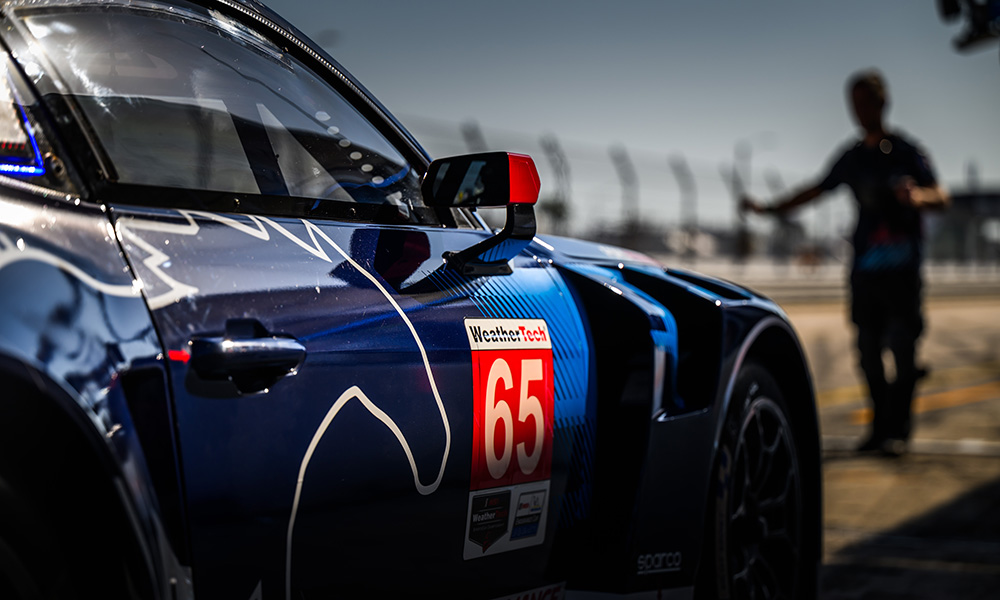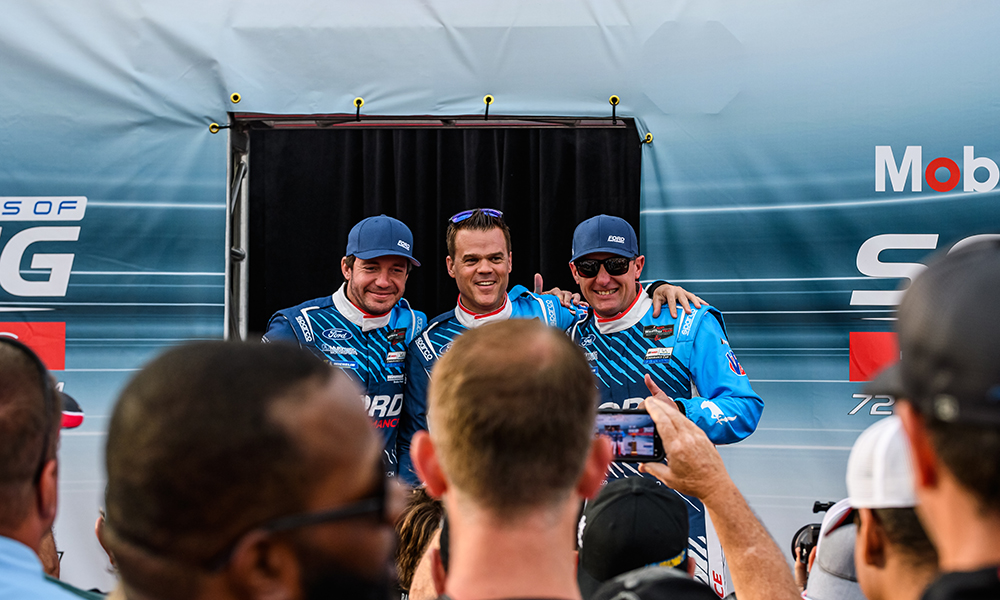
Photo: Wes Duenkel/Ford
We learned a lot as a team when we left Daytona, fixing what we felt we needed to for the Twelve Hours of Sebring. I’ve won the race a couple of times with Dirk (Müller), and our program also had a decent feeling about it, because we did a lot of endurance testing and developmental work there for Mustang GT3.
We all want to show up and win, of course. But ultimately and at this stage, collecting data is so important so we can further improve our programs with Mustang GT3. There are lots of different types of tracks on the schedule.
Daytona is completely different to Sebring; you’re doing a lot of passing and defending in bumpy braking zones at Sebring, trying to avoid being picked off by Prototypes while you’re trying to pick off GTD cars.
Not only that, but we experienced hotter temperatures than what we did in our early development work, which was an additional challenge with this new tire. We hadn’t run in this kind of heat with it, we did not know the tire degradation yet, and we also had a limited tire allotment of 15 sets.
The more sets of new tires you have for the race, the better off you are, so that was on our radar right away. We tried to get our hot flyer in for qualifying within one to two laps to save those tires, and we opted to stay in pit-lane to get a good enough gap for it. But other competitors had a similar idea, so we ended up in the mix and did not get the best lap.
For a 12-hour race though, you don’t necessarily need to start up front.

Photo: Ford
I knew, starting the race, that it was going to be a dicey one just by how Daytona went. I took the green flag, and I could tell I was right. The field went four or five wide going into the first turn, and I didn’t have a warm and fuzzy feeling about it. I backed off a little bit through there, seeing some cars bounce off each other.
The spotter could not see what was going on through the smoke, so in a total “Days of Thunder” move I drove right through it. I cleared one car and here comes another competitor bouncing through the grass to get back on track. I don’t know if people want it in the metric or American system of measurement, but I cleared it by two-millimeters, one-sixteenth of an inch.
I was already accepting that I was impacting the left-front of the car, but thankfully, it was just a very near miss.
I felt good about my stint, as we just tried to stay clean and move up in the order. We decided to stay out despite the fuel warning light coming on – so we basically had another lap at race pace before needing to pit – but I didn’t get to the third turn before the race went yellow.
That was bad news for us. Had we made it around it would have worked perfectly, because we made some positions on a lot of cars, and we were going to cycle out in a really good spot.
We were forced to make an emergency service stop for a five-second count of fuel. Thereon we still needed a full-service pit-stop, but now we also had to serve a drive-through penalty. I honestly feel like that moment right there defined our race.

Photo: Wes Duenkel/Ford
Before then, we were continually improving and weren’t in the hornet’s nest, which makes a big difference at Sebring.
Regardless of the result, racing is about people and I saw a lot of good things from Ford Performance and Multimatic Motorsports. We were firing on all cylinders, better than what we did at Daytona (though it was our first race).
Nobody likes eighth and ninth, but I was telling the crew that collecting data and developing this car to make it better is so important. That camaraderie and communication is going to pay dividends when we are at the track that best suits our car or when we get everything in place to race for a win.
I’m excited for the races to come – the next which is my hometown race at Laguna Seca. It has been resurfaced, and it’s our first sprint race of the season. There’s always something to be said about home field – or home track – advantage.
I’ve won there once and it was the last win for Ford GT in 2019, which was also my first win there. So, I’m ready to have a good result there, because it’s been good for me.

Photo: Ford


























